Dharavi, Asia’s largest slum is in the heart of Mumbai. Spread over 535 acres, approximately 8.5 lakh people live in approximately 55,000 dwelling units in Dharavi with a population density of 3.4 lakh per square km.
One of the many communities, living in Dharavi for decades, is the traditional potters community. ‘Kumbhar’ means pots and ‘Wada’ means colony. Dharavi’s Kumbharwada is where the magic of clay has been happening for decades together. Kumbharwada occupies about 12.5 acres in Dharavi, and is home to 500 potters’ families.
A well-settled and internationally famous colony, however, struggles during the rains. Production reduces drastically and the potters push through the dry spell. “The business comes down by almost 80 percent in the months of monsoon,” says Balaji, a potter from the community.
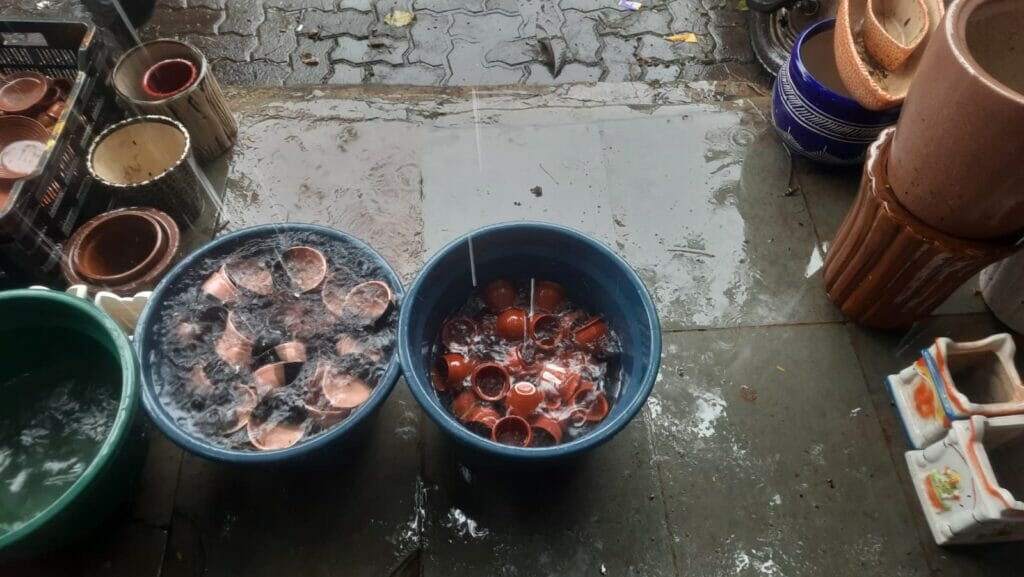
Harjiwala has been making pots in Dharavi for over 40 years now. He plans his shift and works at three to four different places a day. He makes pots with impressive speed with his skilled, experienced hands.
But during monsoon, he cannot make more pots, because of limited space in the house of his owner. Pots take extra time to dry during monsoon. Unable to dry the pots outside their homes, the community cuts down on production.
Harjiwala says his children are not artisans, his son is an engineer. He is proud of the fact that he worked as an artisan for years and got his daughters married.
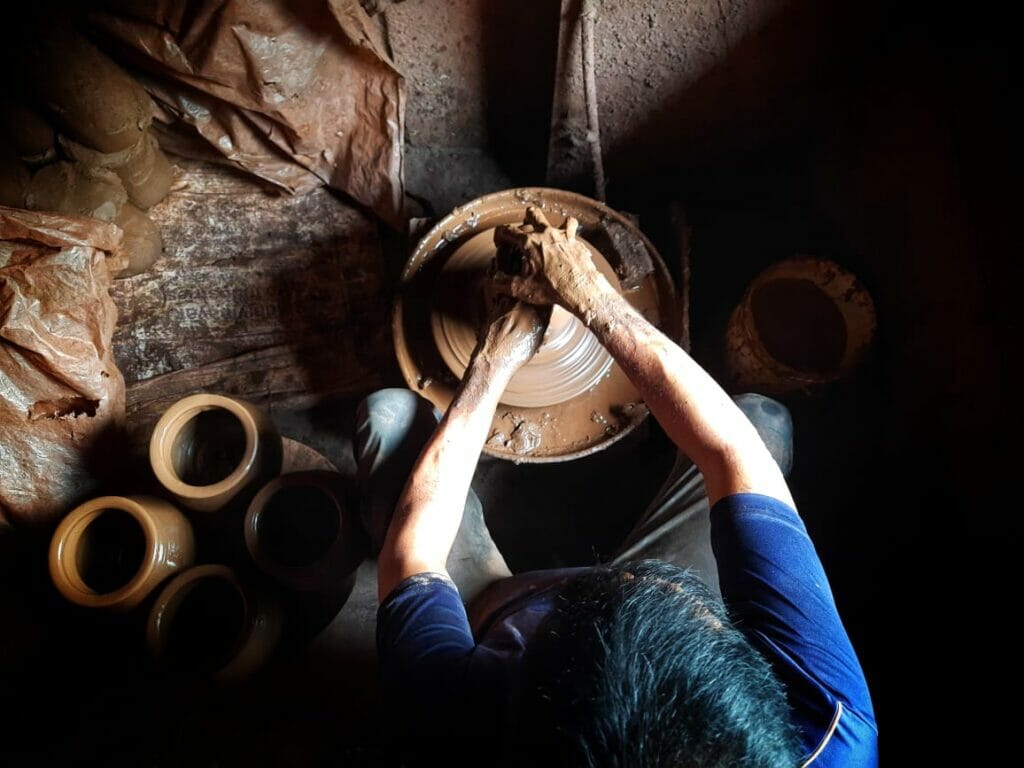
Iruben is one of the many old women in Kumbharwada, who are dedicated potters. She was a teenager when she learnt pottery. Her small house is dark and the gloomy, rainy day makes it harder for her to work. She sits at the entrance of her home to kneed the clay to get some light.
This correspondent noticed lack of light in most houses and narrow lanes were dark in the gloomy monsoon climate. Congested lanes of Dharavi become hotspots for malaria and other diseases. Open gutters often overflow and stagnant water is collected in many areas. But potters in Kumbharwada, go on with their lives.
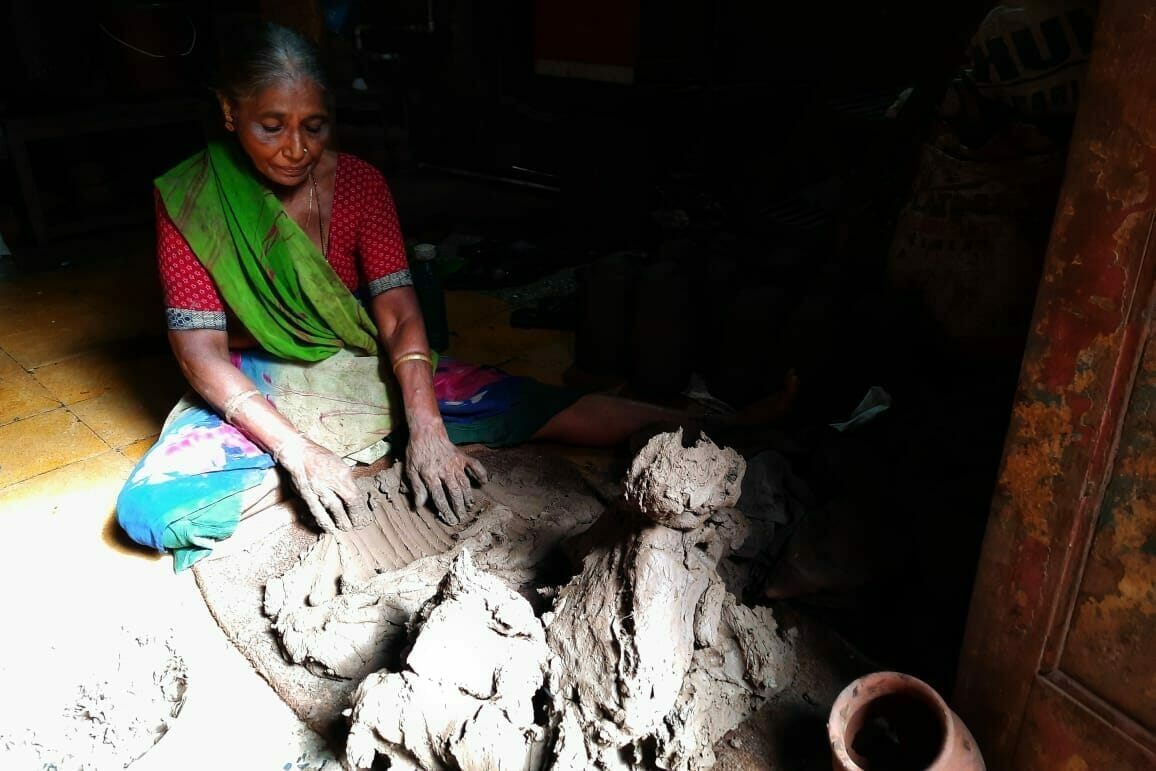
Bhanuben carries these heavy pots on her head and walks for 1 km to sell it. She walks with confidence making the basket of pots on her head look very easily manageable. Even monsoon cannot stop her.
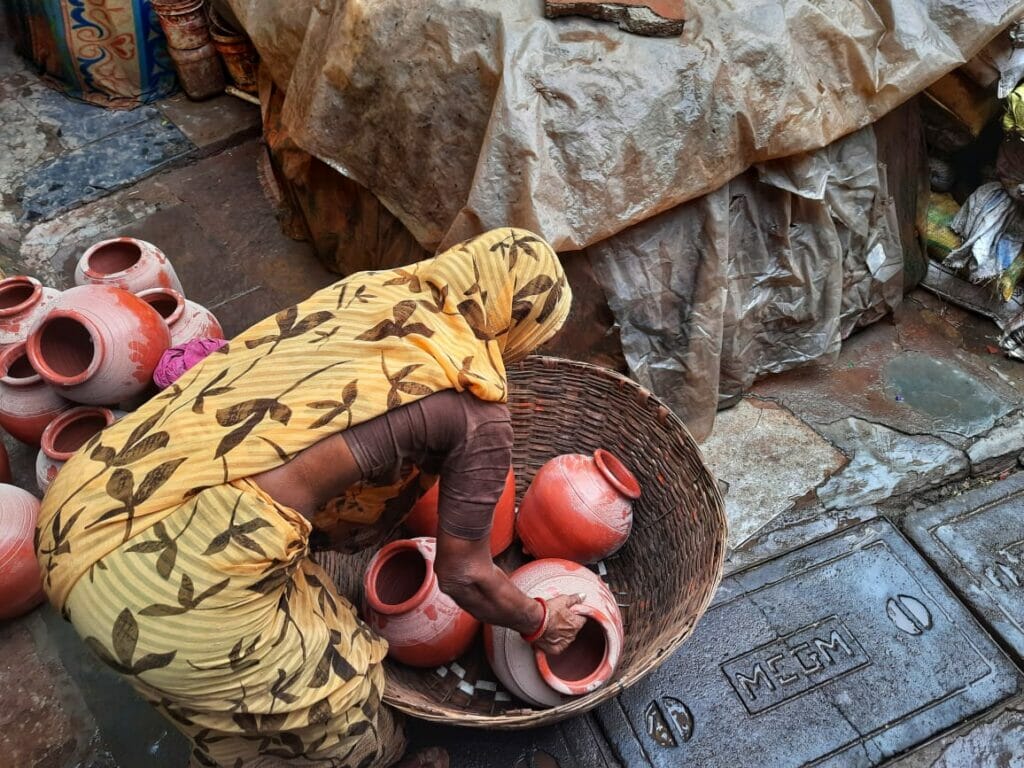
To bring a pot to its finished form, the dedication of not only the artisans but also there family is required. Their families are equally involved in the process.
In monsoon, the families dry the pots under fan inside congested houses, getting high electricity bills. Even if they feel cold during monsoon, they stayed under the fans several hours a day, allowing the pots to dry.

The potters call the monsoon season ‘aaram‘ (rest) season as there is nothing much to do. If one batch is not dry, they cannot start with a fresh batch. When the lean season arrives, they survive by taking other jobs.
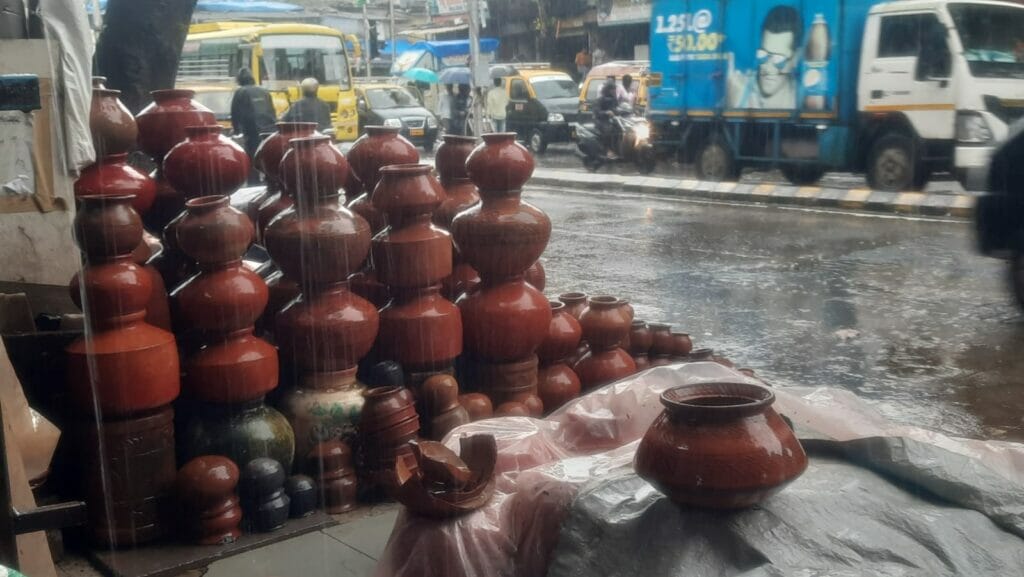
“I am also a tailor, the work of pottery was started by my ancestors I didn’t want to discontinue it and stop the legacy. During monsoon when pot making doesn’t give much profit I run my home by tailoring clothes but that business has also come down as not many people get their clothes stitched these days,” said Balaji.
Read more: Explainer: Dharavi redevelopment — What lies ahead
When you walk in the lanes of Kumbharwada during monsoon, it appears as if the entire Kumbharwada is put to sleep without an alarm to wake up.
People here have mixed feelings about the claims of government regarding the Dharavi redevelopment. Balaji says that he is being hearing about Dharavi’s redevelopment ever since he was a child. He no longer has any hopes from the claims that the authorities have made.
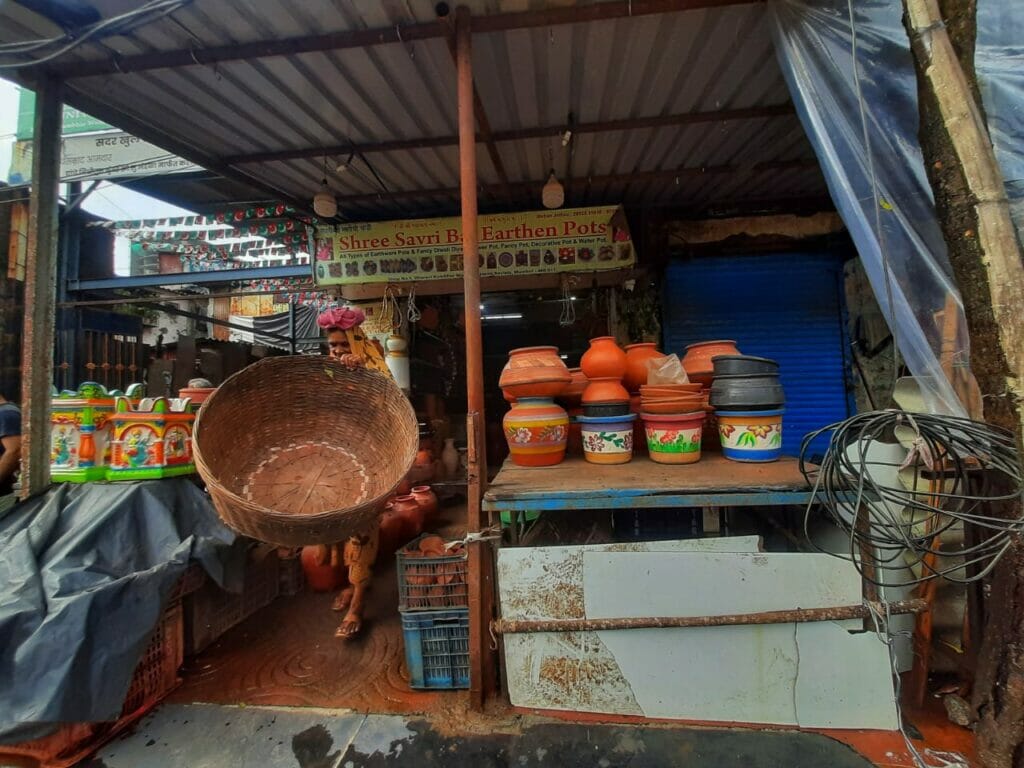
Nathalal Savanya is another pot maker who is been making pots since 1952 in Dharavi’s Kumbharwada. The old crowd in Kumbharwada has still kept themselves devoted to their traditional pottery skills.

Even though he is old, his eyes sparkle when he sits to paint his pots. He has not lost hopes in Kumbharwada, and is expecting to get more space after redevelopment.
The young generations of Kumbharwada have moved away from pottery and shifted towards pursuing jobs in private and public sectors.
The journey of the pots end when they are displayed in the shops. Dharavi’s 90 feet road lane is filled with such tiny as well as big pot shops.

While some have left the craft of pottery due to the financial reasons, many continue to put in the hard work to craft handmade pots with love, to beautify our homes. Harjiwala, Bhanuben, Iruben, Balaji and Nathalal are some of these artistes, who have kept the Kumbharwada in Dharavi still alive.